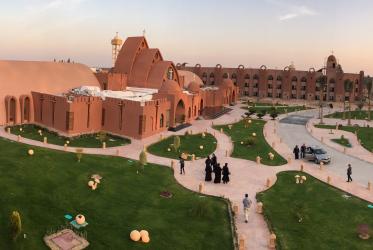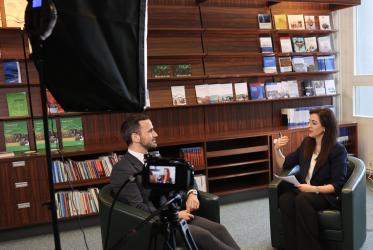Presentation by Dr Minna Hietamäki
How Much Diversity Is Enough?
Thoughts on the Unity and Doctrinal Diversity of the Church Today
In my current work as a teacher in religion I am in the privileged position to meet and discuss with a number of young people who come from various, although mainly Christian and more specifically Lutheran, backgrounds. Religious education in Finland is a compulsory subject all through the nine years of basic education and two to four years of high school. The nature of religious education is not “general” but it is not “confessional” either. The rule of thumb is that you participate in religious education organised according to your own confession or religion but the nature of the education is more academic than catechetical. This means that the religious education is not “practising religion” but discussing and learning about religion. Putting aside some of the questions this raises about separating the “learning” and the “practising” I would like point to a specific challenge I have encountered with my students which brings us to the ecclesiological theme of this Faith and Order meeting. The challenge is this: the whole idea of the “unity” of the Church very rarely has any significance to my students. After having engaged in questions of encountering “the other”, the relevance of working with each other for justice and peace, after pondering the challenges faced in inter-church families and after looking into the history of the ecumenical movement the students look to me and say: all this is very fine but why should we be concerned about unity. The question does not arise solely from youthful ignorance but out of their experience of the diversity of everyday life. Unity, for them, means coerced uniformity, the loss of individual identity and the necessity to conform to something alien. It means that someone in an authoritative position tells you how you have to think and behave. From these premises it is very difficult for them to understand all the fuss about unity. Is it not interesting, they ask me, to have also different people in the world? Does not everyone have the right to think and believe what he or she wants? What does the teacher have against different people? It is the reactions of my students in mind and with the understanding of the purpose of the Faith and Order Plenary Commission to reflect on the church’s calling to be one that I begin to share with you my impressions on the relevance and possibility of the unity of the Church today. I will approach the Church’s unity from the viewpoint of diversity. The question in my mind is not so much how much diversity can Church’s unity tolerate but how much diversity does the Church’s unity need.



